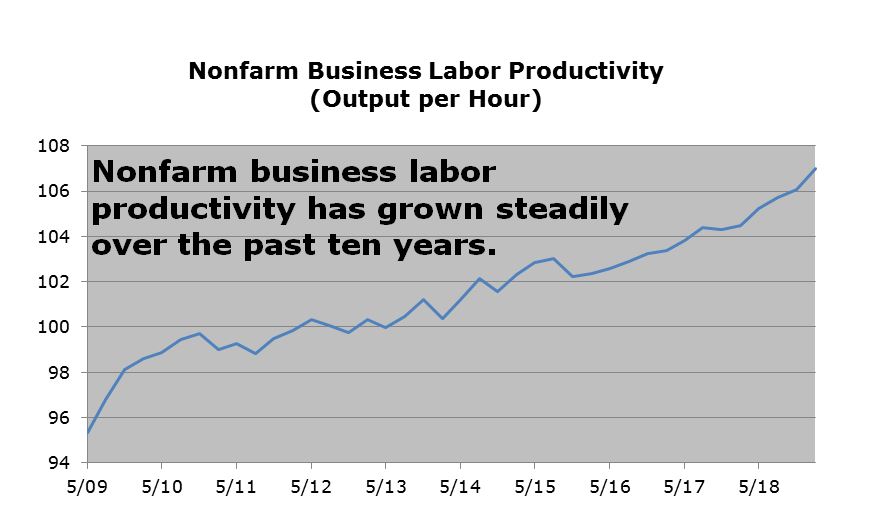
The stock market rally continued in April, with the Dow Jones 30 gaining 2.7% and the S&P 500 up 4.0%. The tech-heavy NASDAQ was the winner for the month with a gain of 4.7%. Better-than-expected corporate earnings in April, a decline in inflation pressures and an excellent GDP report late in the month were among factors behind the ongoing rally.
First quarter estimated GDP came in at 3.2%, well above the expected 2.5%. Economists were predicting zero growth in the economy back in January; no wonder the field has been called “the dismal science!” There will be two revisions to the GDP number in the coming weeks, and the first estimate is usually revised higher. Critics of the 2018 tax reform have claimed the impact would be felt for one year and the “sugar high” would then wear off. We disagree. A key focus of the reform was to incentivize US companies to boost manufacturing and capital spending in the US versus other countries. One key provision allows companies to expense qualifying capital expenditures 100% in the year incurred, rather than depreciate the new costs over several years. This means new spending is more profitable in year two and thereafter. Federal Reserve data shows significantly more companies increased capital spending in 2018 than the period 2012-2017.

A stronger economy with low unemployment does not necessarily increase inflation pressures if productivity increases as well. This “supply-side” component of growth remains under-appreciated and has contributed to keeping pricing pressures contained. The two sectors with the highest capital spending are technology and industrials, and not coincidentally, they are the two best performing groups in the market in 2019. Higher capital spending should lead to better productivity. Indeed, the first quarter of 2019 report on nonfarm productivity showed an increase of 3.4%, the most in five years. The Fed can thus afford to remain quiet and keep interest rates at current levels for some time.

